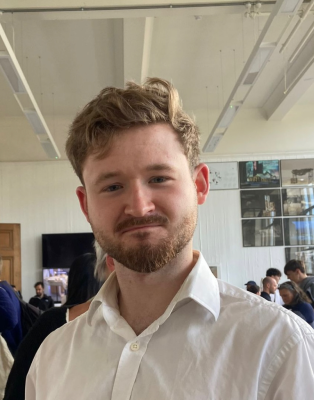

Instagram: the_fine_art_guy?igsh=Z2NkeWx1bHJuc3U4&utm_source=qr
As a portrait artist belonging to a time where the likeness of a person can be created digitally and stored as a file on a computer, the importance of my genres traditional aim in capturing ‘likeness’ seemingly decreases. My work explores how the hyper-digitalised society of today has impacted the value of visual legacy more broadly.
Historically portraiture conveyed information relating to the sitter through a semaphore like language of symbolism, susceptible to fade and become incomprehensible with time. Today, the digital portrait’s interaction with language is one of total utility. Binary runs through its pixels like blood through flesh; but both analogue and digital likenesses deal with data in the captured record of the person. Considering the fluid nature of data exchange in the contemporary world in relation to obsolescence or change in language presents questions as to how the visual legacy can be altered, corrupted, or even doctored. The rise of AI and the process of machine learning places the computer as an artistic automaton – manipulating and corrupting the sitters face, a true resurrection of the fear originating from portraiture’s historic association with counterfeiting.
Exploring the extent of which a digitalised existence intersects with the moment-based aspect of capturing likeness,my portraiture questions it’s values as a legacy preserving process in a digitalised society. Interpreting the portrait as both a demonstration of visual information and an exercise of trust, both between myself and sitter and painting and viewer, I intend to capture a moment of change in the sitter’s life. This focus on trust and process challenges its own objective truths as a definitive visual representation in a society where it’s increasingly corruptible. To summarise my practice, I portray my sitters as entities changing and shifting through their life in their environment in their moment. The work empathetically acknowledges it’s sitters as living humans with changing emotions but challenges its own authority and sincerity as a static visual legacy.
Born in Paisley but subsequently raised in Hampshire, I grew up always processing and expressing myself through drawing. This desire to process and actualise things was foundational in my endeavour to capture peoples' likenesses but it also spurred on my early fascination with the process of painting. This interest in method and process was further stoked by my introduction to art history and the medium of oil painting.
During my time at the University of Edinburgh I focused this interest on the period between the fourteenth and the eighteenth century. The combination of researching technical art history and my developing art practice encouraged my own experimentation. My first ever recreated a fourteenth century ink recipe from oak galls collected in the New Forest, which were then used for ink washes.
In the later years of my study, I discovered the pioneering nineteenth century work of Charles and Elizabeth Eastlake which introduced the rabbit hole subject of Early Netherlandish paint medium. I experimented with siccatives and varnish combinations proposed by subsequent academics, using chemicals found in recent chemical analyses. The painting ‘Putting on a Front’ is a culmination of this research. Immediately, this approach gave me a better understanding of how art of that time was made and how it changed according to social and practical factors. However, it also allowed me to explore, familiarise and adapt my materials through a historical grounding to create works existing in an uncanny valley of traditional and contemporary aesthetic.
Following on from my time at the ECA, having gleaned invaluable art historical knowledge and ideas, I wish to pursue a career in the conservation of easel paintings. I hope this immersion in historic processes will continue contributing to my artistic practice whilst also allowing me to give back and help preserve works for future generations.